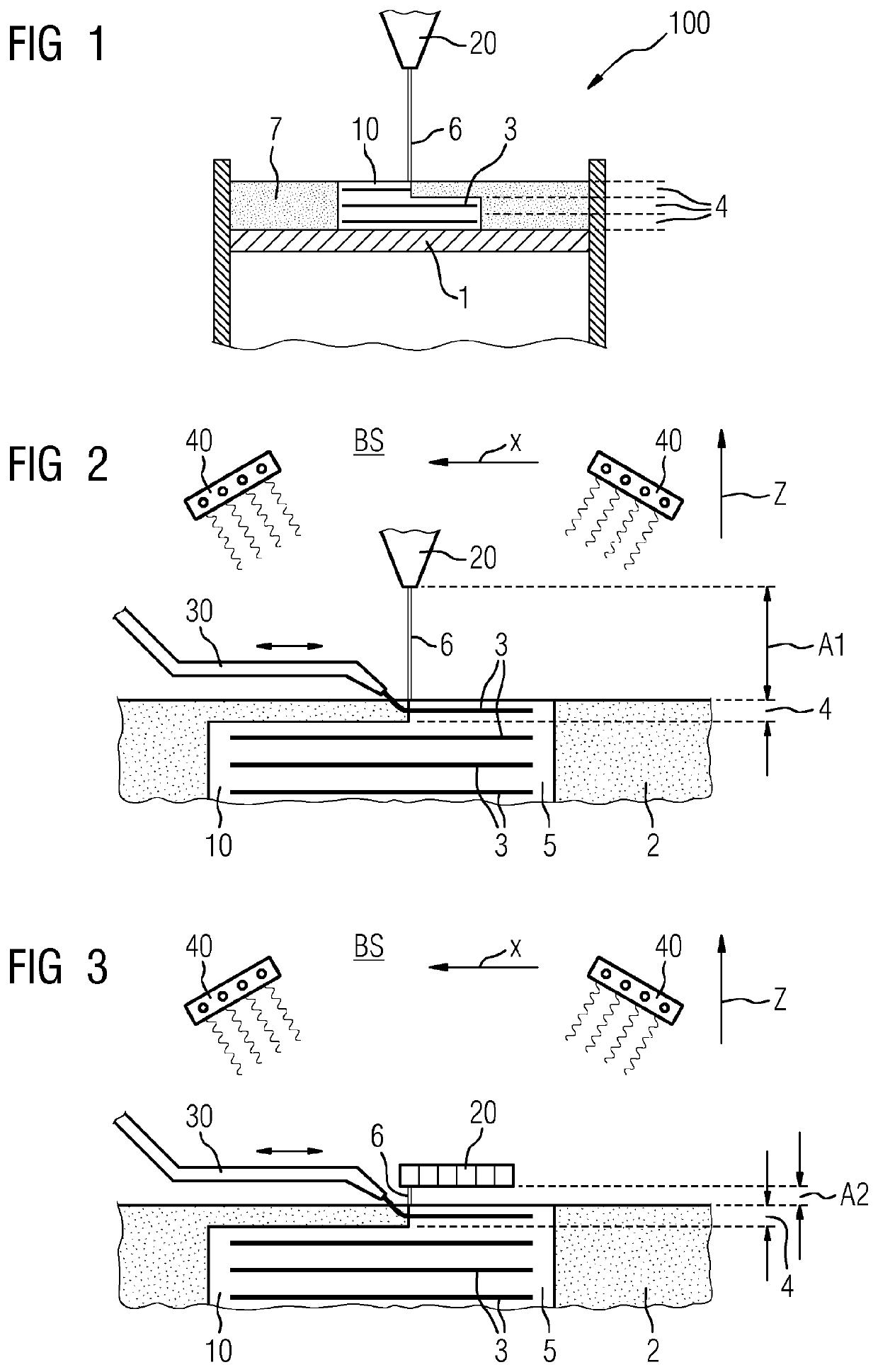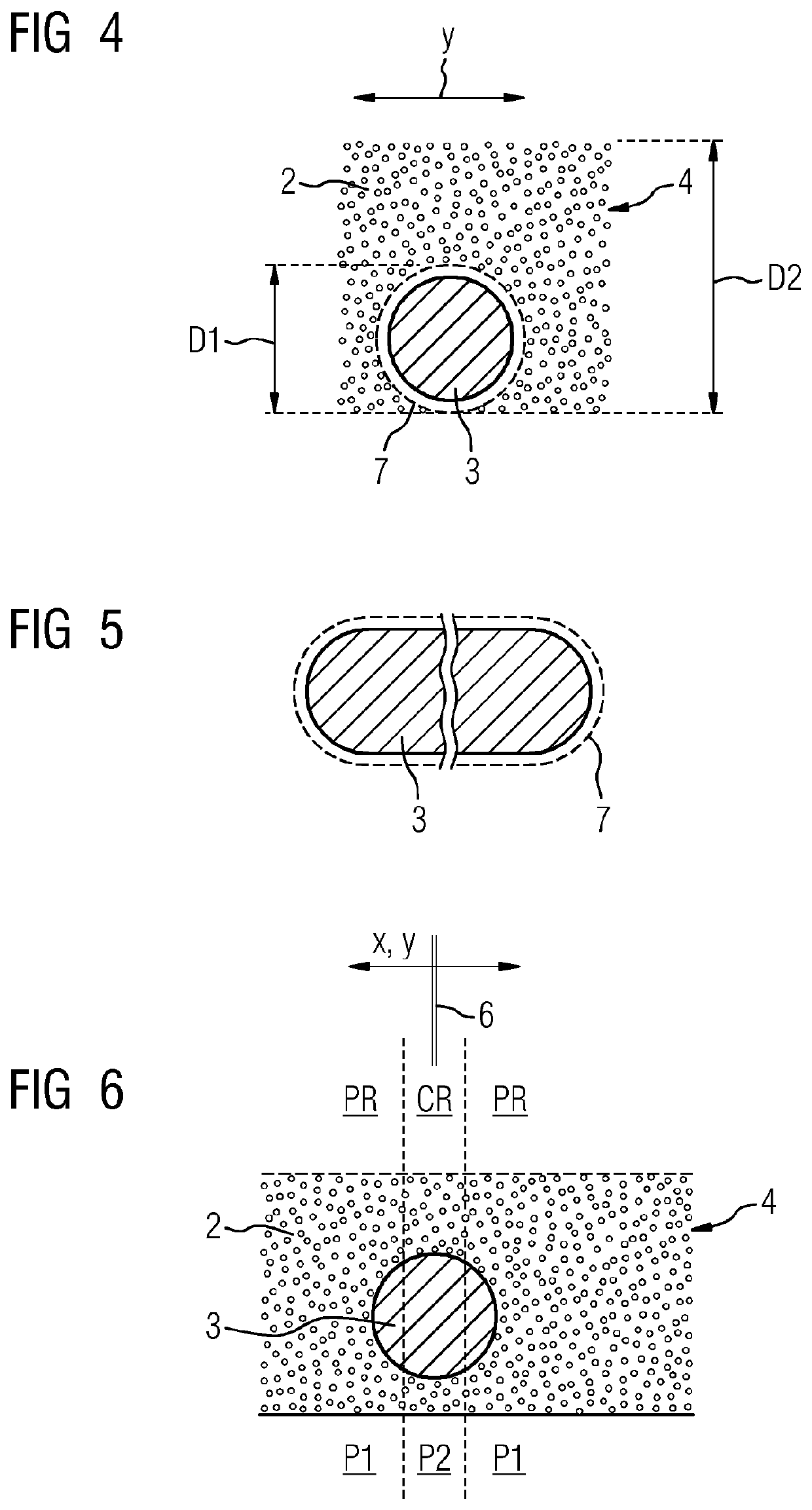Method to additively manufacture a fiber-reinforced ceramic matrix composite
a ceramic matrix and composite material technology, applied in the direction of additive manufacturing with solids, additive manufacturing apparatus, etc., can solve the problem of no reproducible and reliable manufacturing route, and achieve the effect of preventing rupture and/or stress
- Summary
- Abstract
- Description
- Claims
- Application Information
AI Technical Summary
Benefits of technology
Problems solved by technology
Method used
Image
Examples
Embodiment Construction
[0049]Like elements, elements of the same kind and identically acting elements may be provided with the same reference numerals in the Figures.
[0050]FIG. 1 indicates schematically a powder bed process for additively manufacturing a component 10. The process may be carried out in an additive manufacturing device 100. The process may further relate to selective laser melting, selective laser sintering and / or electron beam melting, for example.
[0051]The component is, advantageously, a turbo machine component, particularly applied in the flow path hardware of gas turbines.
[0052]It is commonly known in SLM processes that the component 10 is manufactured on top of a substrate or build platform 1. Particularly, the first layer to be manufactured of a metal component is adhesively joined or metallurgically bonded to the substrate 1. The component 10 may be depicted in a partially manufactured state. The component 10 is further built layer-by-layer out of the powder bed formed by a powdery b...
PUM
| Property | Measurement | Unit |
|---|---|---|
| temperatures | aaaaa | aaaaa |
| temperatures | aaaaa | aaaaa |
| bending strength | aaaaa | aaaaa |
Abstract
Description
Claims
Application Information
 Login to View More
Login to View More - Generate Ideas
- Intellectual Property
- Life Sciences
- Materials
- Tech Scout
- Unparalleled Data Quality
- Higher Quality Content
- 60% Fewer Hallucinations
Browse by: Latest US Patents, China's latest patents, Technical Efficacy Thesaurus, Application Domain, Technology Topic, Popular Technical Reports.
© 2025 PatSnap. All rights reserved.Legal|Privacy policy|Modern Slavery Act Transparency Statement|Sitemap|About US| Contact US: help@patsnap.com


